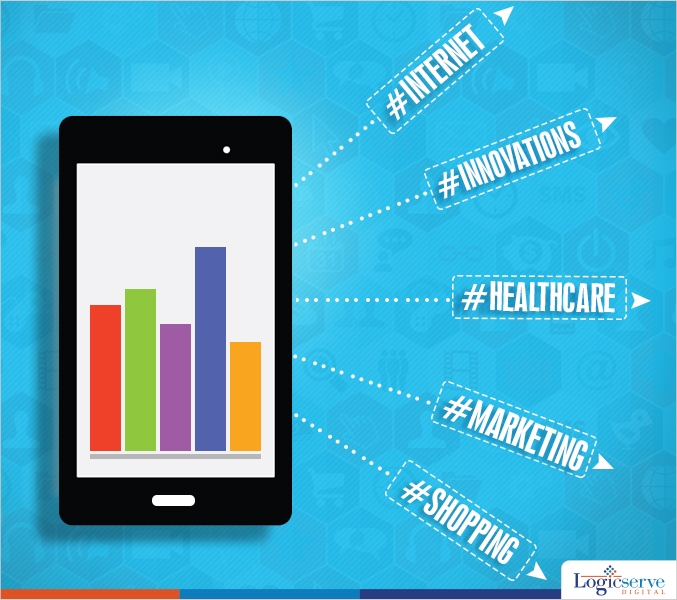The most significant and sudden technological change of the last 20 years has been the rapid growth of the mobile phone. Mobile phones have transformed from being niche devices meant only for the rich to being easily affordable and used by pretty much everyone. The key reason why this has been possible is because of the continuous decline in the cost of processing power and memory which led to the explosion of the PC business first and now powers the relentless growth of mobiles and smartphones.
A Billion Smartphones
In a new record, the global smartphone market crossed a billion units in 2013. Smartphones constituted about 55.1% of total mobile phone shipments in 2013 which was up from 41.7% of total mobile shipments that smartphones accounted for in 2012. Global smartphone shipments in the fourth quarter of 2013 were 284.4 million which was up by 24.2% from the 229.0 million units shipped in the fourth quarter of 2012. The dominance of the Android ecosystem continues as Android-based smartphones make up about 75% while Apple iOS powers only about 15% of the smartphones. Samsung with its wide range of high-end and mid-range smartphones is the largest vendor while Apple comes in second with a plethora of other smartphone brands who do solid business in the low-end of the smartphone market in developing nations constitute the rest of the market.
With the spread of the internet and roll out of 3G and 4G LTE networks, smartphones will be able to do more with the availability of broadband internet.
Growth of Mobile Internet
Internet user base is growing across the world with Asia constituting 44.8% of internet users in the world as of the second quarter of 2012. Europe and North America constitute 21.5% and 11.4% of global internet users. Even as the penetration of the internet grows across the globe, the user base of mobile internet users grows faster than wired internet users.
Just as many people in developing countries such as India used mobiles without ever going through a period of using landline phones, huge numbers of people in the Middle East and Africa access the internet via mobile phones. The eMarketer estimate suggests that 94.0% of internet users in these two geographies will go online via the little mobile phone screen rather than a large desktop screen.
The percentage of internet users who use their mobiles to access the internet is lower in more developed parts of the world such as North America and Europe where it is 64.3% and 67.8% respectively. The global percentage of mobile internet users this year is estimated to be around 79.1% which will grow to 90.1% by 2017.
So, more and more web traffic is flowing to and from smartphones and other mobile devices and this has reached 17.4% of total web traffic as of 2013.
Despite this massive growth, significant swatches of the world’s population in poor countries in Africa, Asia and Latin America continue to remain without access to the internet. Tech entrepreneurs such as Mark Zuckberberg are trying to spread the internet to these areas of the world through their projects such as internet.org.
Google Hummingbird Update
The evolving nature of web access has also impacted the nature of web searches. People who use mobile phones are more inclined to use voice search capabilities offered by Google. Google in turn has changed its algorithms continuously and the latest of those changes emphasize natural language search and semantic search which focuses on the meaning of words and their context rather than just being keyword-driven.
To reach the growing percentage of mobile internet users, websites are being redesigned and revamped to make them more suitable for display on mobile devices. Website search engine optimization (SEO) experts are taking into account the requirements of Hummingbird in conducting site SEO. One of the key aspects of making a website get a good rank in a post-Hummingbird world is to have good content which should be natural and focused on the audience. Other applicable rules include having page URLs that reflect the content on that web page. Also, websites should have simple architecture which will help website visitors and search engines.
Growth of Mobile Marketing
Online marketers are changing their marketing strategies to keep up with changing customer habits. Hence, more marketing dollars are being allocated to online mobile marketing and digital marketing that is tailored specifically for the small screens of smartphones.
Gartner predicts that mobile advertising worldwide will reach $18.0 billion in 2014 compared to $13.1 billion in 2013 and will become as much as $41.9 billion by 2017. According to Gartner, most of the mobile advertising will be display advertising but mobile video advertising will show the largest growth rates.
In a similar report, eMarketer says that global mobile advertising increased by 105.0% to reach $17.96 billion last year. In 2014, eMarketer predicts mobile ads will rise 75.1% to reach $31.45 billion. Predictably, Facebook and Google get most of this mobile ad spend. These two advertising platforms combined, cornered more than two-thirds of mobile ad spends in 2013.
Mobiles are becoming more indispensable Than Ever
For a technology that that is only about two or three decade old, mobile phones have grown in importance as an essential part of our lives. Add the 20-year-old World Wide Web accessible from a mobile screen, and the combination becomes unbeatable.
What can mobiles do?
It seems now a days that it would be more appropriate to ask: what cannot mobiles do?
Short of teleporting humans from one location to another, mobiles have become pretty versatile equipments that go far beyond their primary role of being just a telephone.
Enabling Financial Inclusion
With banks offering net banking facilities via dedicated mobile websites, banking customers get the benefit of accessing their bank account conveniently. Since it’s easier to have a great telecommunications network that is useful for many purposes rather than setting up extensive banking networks, banks are obviously eager to connect with their customers via mobile banking facilities. With just a smartphone and an internet connection, people have access to a bank at their fingertips.
Healthcare Innovations
The role that mobiles will play in improving the lives of people by helping folks keep track of their own health is immense. This is an area where innovation is happening right now and the future will see much more happening as smartphones evolve into wearable computers with smart sensors that can measure the blood sugar level, monitor the heart rate, pulse and other health parameters of the person wearing the device.
Right now, smart watches are a niche product that are being targeted to people who frequent gyms and like to keep tabs on their exercise activity. However, soon enough the role of mobiles in healthcare might grow with the possible launch of devices like Apple’s rumored iWatch.
Mobile Shopping
Mobiles have become a friend of the smart shopper and people are eager to do shopping from their smartphone screens. Mostly, it’s the e-commerce companies who have fallen behind the rapidly changing consumer tastes and now they are scrambling to come up with mobile-friendly websites and Apps to cater to smartphone shoppers.
Showrooming remains a popular activity with shoppers and physical stores are finding it a challenge to compete with the low prices offered by online retailers such as Amazon. But with mobiles enabling such on-the-spot comparisons, retailers and e-retailers will need to get smart and come up with attractive offers to draw in consumers.
Another aspect of showrooming is comparison shopping which is becoming popular with multiple online retailers trying to out-do one another in offering discounts and offers. This has created a market for coupon sites such as Couponraja and Compareraja.
Previous Post: How to use Analytics for tracking PPC performance





